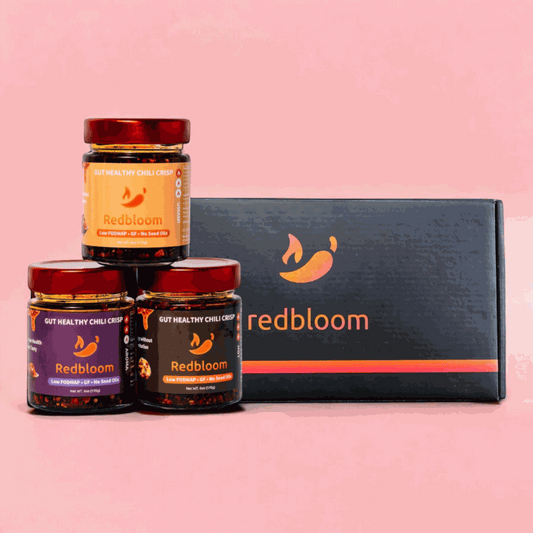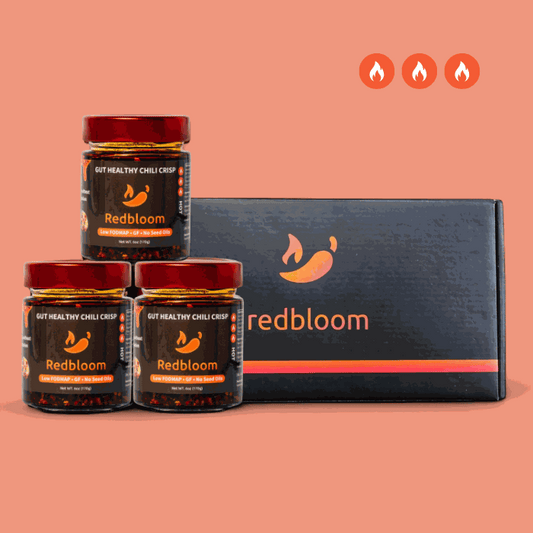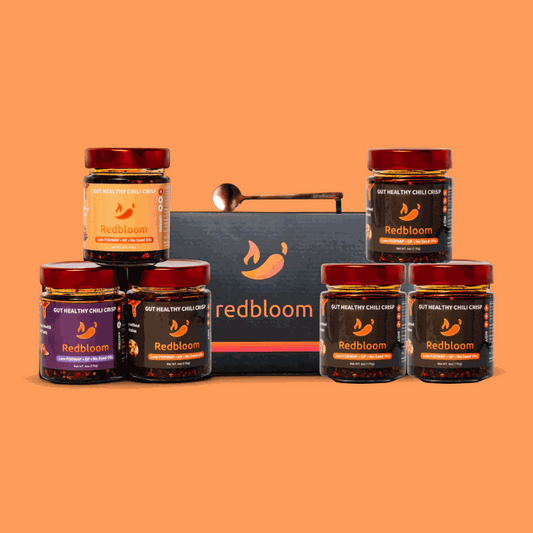Introduction
For many AAPI and immigrant families, spicy food is more than just flavor—it’s a cultural anchor. It’s the taste of home, a link to ancestors, a source of pride, and a way to stay connected through generations. But what happens when digestive issues force you to avoid it? The answer often includes emotional pain, identity confusion, and feelings of disconnection.
In this piece, we explore how spicy food carries cultural significance, why avoiding it can feel like losing part of yourself, and how to adapt without abandoning identity.
Spice as a Cultural Anchor
The Taste of Home
For immigrants and their descendants, spices aren’t just ingredients—they’re emotional experiences. A single whiff of chili oil or bite of curry can evoke memories of childhood, grandparents, and family kitchens across oceans [1].
These flavors offer comfort in unfamiliar places and help reduce feelings of displacement and homesickness, especially during transitions like immigration or assimilation [1].
Passing Down More Than Recipes
Recipes that use chili, garlic, or other strong spices are often passed down orally or by practice, connecting generations through shared sensory experiences. These dishes function as living history, a way to remember and relive ancestral connections [1][2].
Functional and Symbolic Value
In many cultures—Indian, Thai, Korean, and others—spices are both culinary and medicinal. They’re used not only to enhance taste but also to soothe colds, aid digestion, and boost immunity, reinforcing their everyday importance [2].
Spice as Community and Identity
Spicy food is often front and center at holidays, rituals, and community gatherings, symbolizing hospitality, joy, and togetherness [3]. It’s not uncommon for spicy dishes to be the first ones prepared when celebrating life milestones.
The boldness of spice also acts as a cultural assertion—a way for immigrants to hold onto their roots amid assimilation pressures. While mainstream culture may label spice as “exotic,” for many immigrant families, it’s a mark of pride and resilience [1][2].
When the Gut Fights Back
Unfortunately, bodies change. Whether due to IBS, acid reflux, or inflammation, many people eventually experience sensitivity to spicy foods. This creates an emotional crisis:
-
How do you participate in family meals if you can’t eat what everyone else is eating?
-
How do you explain your “no chili” rule to elders who view it as a rejection?
-
How do you enjoy holidays when your favorite foods now cause pain?
These situations trigger feelings of shame, grief, and isolation.
Coping with Assimilation, Discomfort, and Identity Loss
Spicy food often helps immigrants cope with cultural transitions. When that comfort is removed due to gut sensitivity, it feels like losing your emotional safety net [3].
Moreover, in many households, declining spicy food may be misinterpreted as disrespect or cultural detachment, especially if elders equate spice with strength, vitality, or authenticity [1].
Thankfully, many are finding ways to adapt. Ethnic enclaves, community cooking events, and social media offer platforms where adapted spicy recipes can still express heritage while respecting individual health needs [2].
Fusion, Adaptation, and Reclamation
Many immigrants have historically adapted their recipes to new environments. So this moment—where you adapt spicy recipes to gut-friendly versions—is part of a long tradition of culinary resilience [2].
Modern Adaptations Include:
-
Using garlic- or chili-infused oils instead of raw spices
-
Replacing high-FODMAP ingredients with low-FODMAP spices
-
Exploring less aggressive peppers (e.g., Aleppo, guajillo, or Kashmiri chilies)
-
Creating small-serving fusion dishes with Western bases and traditional flavors
By doing this, you reclaim the emotional and cultural value of spice without triggering pain.
Spicy Food’s Global Influence
Immigrant cuisines have reshaped mainstream food culture. From Sriracha to gochujang to vindaloo, spicy condiments are now grocery staples. This rise reflects both immigrant resilience and a broader cultural appetite for bold, diverse flavors [4].
Even those outside immigrant communities now associate spice with adventure, authenticity, and depth—proof that maintaining spicy traditions isn’t just personal, it’s influential.
FAQs
1. Why does losing spicy food feel so emotional?
Because it’s tied to identity, memory, and belonging. For many, it’s the most consistent connection to family and culture.
2. Is giving up spice forever necessary?
Not always. Many people can reintroduce spicy foods through methods like microdosing, oil infusions, or pairing with anti-inflammatory ingredients.
3. What if my family doesn’t understand my restriction?
Open conversations about health, with offers to adapt recipes together, can build mutual understanding and respect.
4. Can food still be “authentic” if it’s adapted?
Yes. Authenticity evolves. Every generation adapts to their environment—and gut health is part of that environment.
5. How can I emotionally cope with dietary changes?
Journaling, connecting with others facing similar challenges, and creating new rituals around adapted meals can ease the transition.
Conclusion
Spicy food is more than heat—it's history, love, and community. And while gut issues may change how you engage with these flavors, they don’t erase your roots. With awareness, creativity, and compassion, you can preserve the heart of your food culture and nurture your health at the same time.
Spice isn’t something you have to leave behind—it’s something you can bring with you, one adapted recipe at a time.





